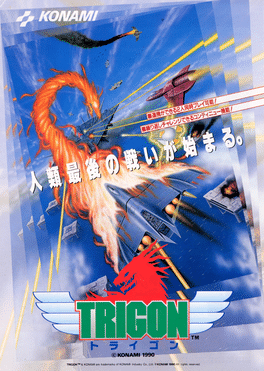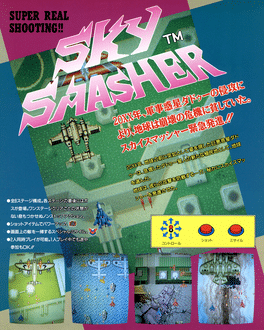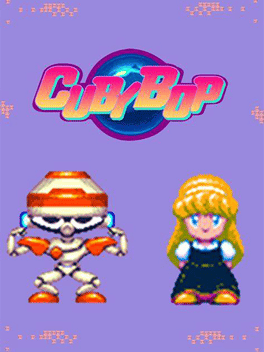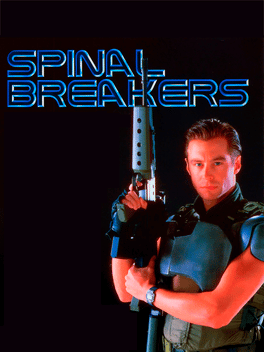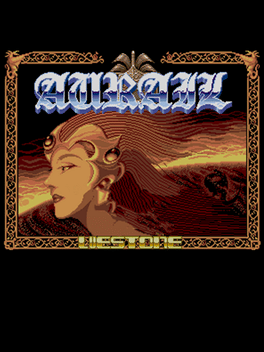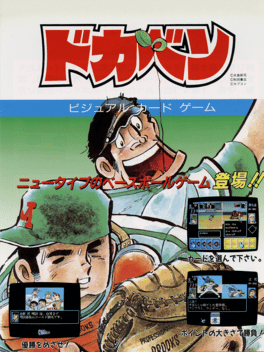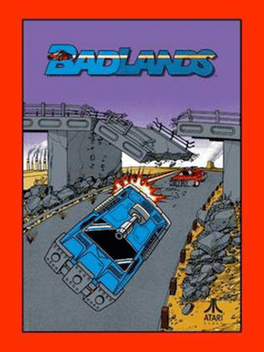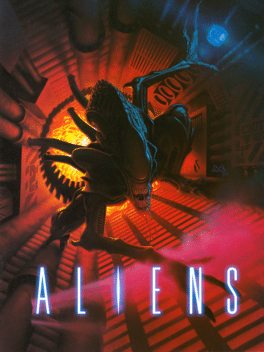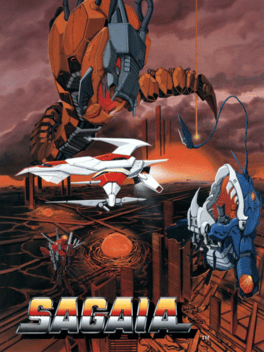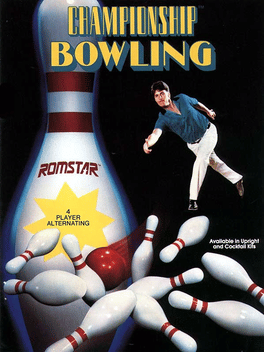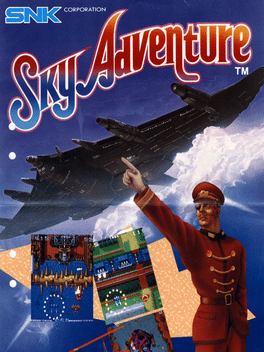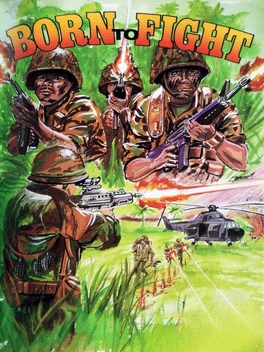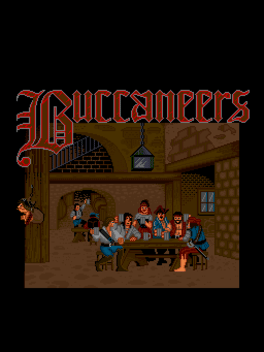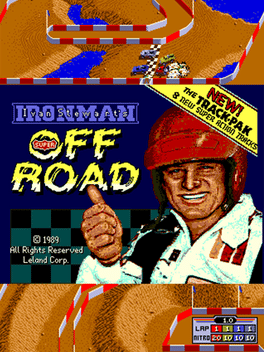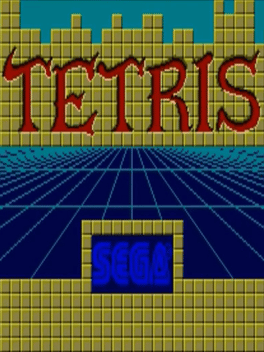New Arcade Games - Page 88
-
Double Axle
1990
Double Axle
1990
Double Axle is a monster truck racing game created by Taito in 1991. The object of the game is to complete every single race by coming in 3rd Place or better. If the player fails to do so, the game will end. By completing races successfully, the player will be awarded prize money depending on how well they did. This game also features the option of upgrading the monster truck, which is essential for completing harder races. Additional money can be earned by completing the bonus stages after each race. The Japanese variant of Double Axle was as Power Wheels, featuring slightly modified gameplay. -
Trigon
1990
-
Sky Smasher
1990
Sky Smasher
1990
Sky Smasher is a Shooter / Flying Vertical game developed by Nihon System in 1990 for the Arcade. -
Cuby Bop
1990
Cuby Bop
1990
You and an opponent, either the computer or another player, throw a ball up to try and break colored blocks; blue for player one, red for player two. Only when the ball is thrown as the player's color will it break the blocks. Otherwise, it will just bouce off your opponent's blocks. -
Spinal Breakers
1990
Spinal Breakers
1990
This game is a shooter almost like Cabal, except that your characters are huge and the screen continually scrolls to the right. The object of the game is to help rid the Earth of aliens. -
Aurail
1990
Aurail
1990
Aurail is a scrolling shoot 'em up arcade game developed by Westone and released by Sega in 1990. The player pilots a tank mecha and shoot enemies (fire in 8 directions), collect power-ups to increase shields and operate the remote attack drone, and defeat bosses to advance levels. Features tunnel levels with a first-person view. -
Ju Ju Densetsu
1990
Ju Ju Densetsu
1990
According to the TAD president, Tadashi Yokoyama: One day in December 1988, a freelance artist came at TAD with a portfolio of designs including this monkey. The team was motivated to do a game around this funny monkey. On February 02, 1989, the first prototype was ready: one level, no enemies, no musics and the monkey can jump only (no shoot). At this point, they decided to reprogram the game entirely from 0. Note JuJu Densetsu was coded with the same system used by the neogeo coders at SNK. During the first location test (at the TAD office) on September 07, 1989, many new ideas came to the developers but most of them were not included in the final product (i.e: snakes on the first stage), because lack of time. On September 15, 1989. a public location test was done in Japan AND in the USA (University of Washington). A second test was done in October. After this test, they decided to program the end of the game (done by a non-programmer in a week-end). Note: The girl you have to save is brune in the attrac -
Dokaben
1990
-
Bad Lands
1990
Bad Lands
1990
Bad Lands is effectively the spiritual successor to Atari's previous racing games Super Sprint and Championship Sprint. Similarly to the Sprint titles, Bad Lands pits three cars against each other in a three lap race around a small, single-screen circuit. Bonuses are present in the form of wrenches which can be traded for goods such as extra speed, extra acceleration or better tires. -
Genshi Tou 1930's
1990
Genshi Tou 1930's
1990
You are investigating the suspicious pre-historic islands, to find out why so many people who visited this place, have gone missing. You take control of a plane. While flying above the mysterious island you face many pre-historic animals as enemies. There are many Wild humans below on the ground as well, who try to catch onto your plane if you fly too low. Dinosaurs still exist!! -
Daisenpu
1990
-
Aliens
1990
Aliens
1990
star 7.9Aliens is an arcade game based loosely on the 1986 movie Aliens. You and a friend play female Marines and you must explore and destroy all aliens who have taken over a now abandoned space settlement LV426 Acheron. If you can find any survivors try to rescue them. As well as your normal gun there are other weapons that can be used to help you. A Caterpillar P-5000 can also be found and used. Aliens is mainly a side view horizontal shooter where the screen scrolls as you move from left to right. Some parts of the game require you to look behind the hero firing into the screen as aliens come towards from the distance as well as moving in other directions like in a lift. You can also be driving into the screen trying to shoot aliens. -
Sagaia
1989
-
Championship Bowling
1989
Championship Bowling
1989
A bowling game from Romstar. Championship Bowling was produced by Romstar in 1989. Romstar released 9 machines in our database under this trade name, starting in 1987. Romstar was based in United States. Other machines made by Romstar during the time period Championship Bowling was produced include: Sky Shark, Time Soldiers, Cal .50 - Caliber Fifty, Down Town, Fire Shark, Skeet Shot, and Popshot! -
Sky Adventure
1989
-
Pacman Club
1989
Pacman Club
1989
Club Pacman is a Ms.Pac-Man-like game with the same object as Pac-Man except, Club Pacman has some new features including: Music when you eat a Power Pellet, Turbo speed when eating a Power Pellet, Fast fruit, faster ghosts when you get good, and speed options. -
Born to Fight
1989
Born to Fight
1989
A 1- to 2-player military combat battle game where players use optical machine guns to shoot on-screen enemies. -
Buccaneers
1989
Buccaneers
1989
Buccaneers is a beat 'em up made game for Arcade machines, developed and released by Duintronic in 1989. You control a sailor beating up pirate thugs in a pirate-themed world, much in vein of The Secret of Monkey Island. You can attack them by either punching or kicking your enemies. -
Super Off Road Track Pack
1989
This game is almost exactly the same as the original except that it has eight brand-new tracks which are Shortcut, Cut-off Pass, Pig Bog, Rio Trio, Leapin' Lizards, Redoubt About, Boulder Hill and Volcano Valley. -
Tetris
1989

